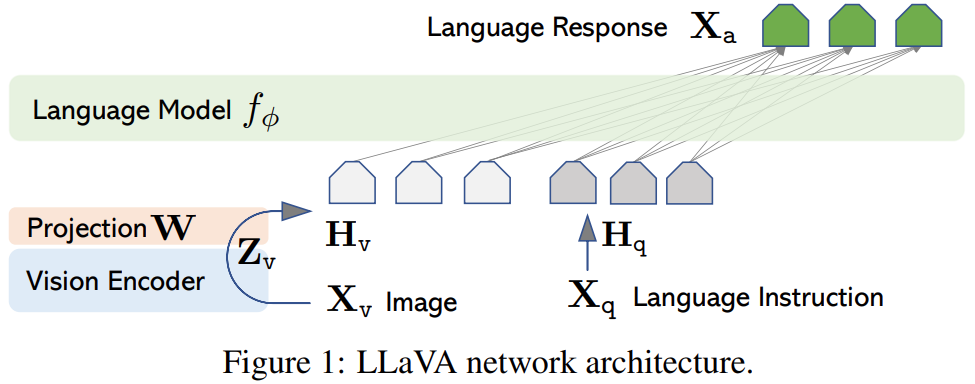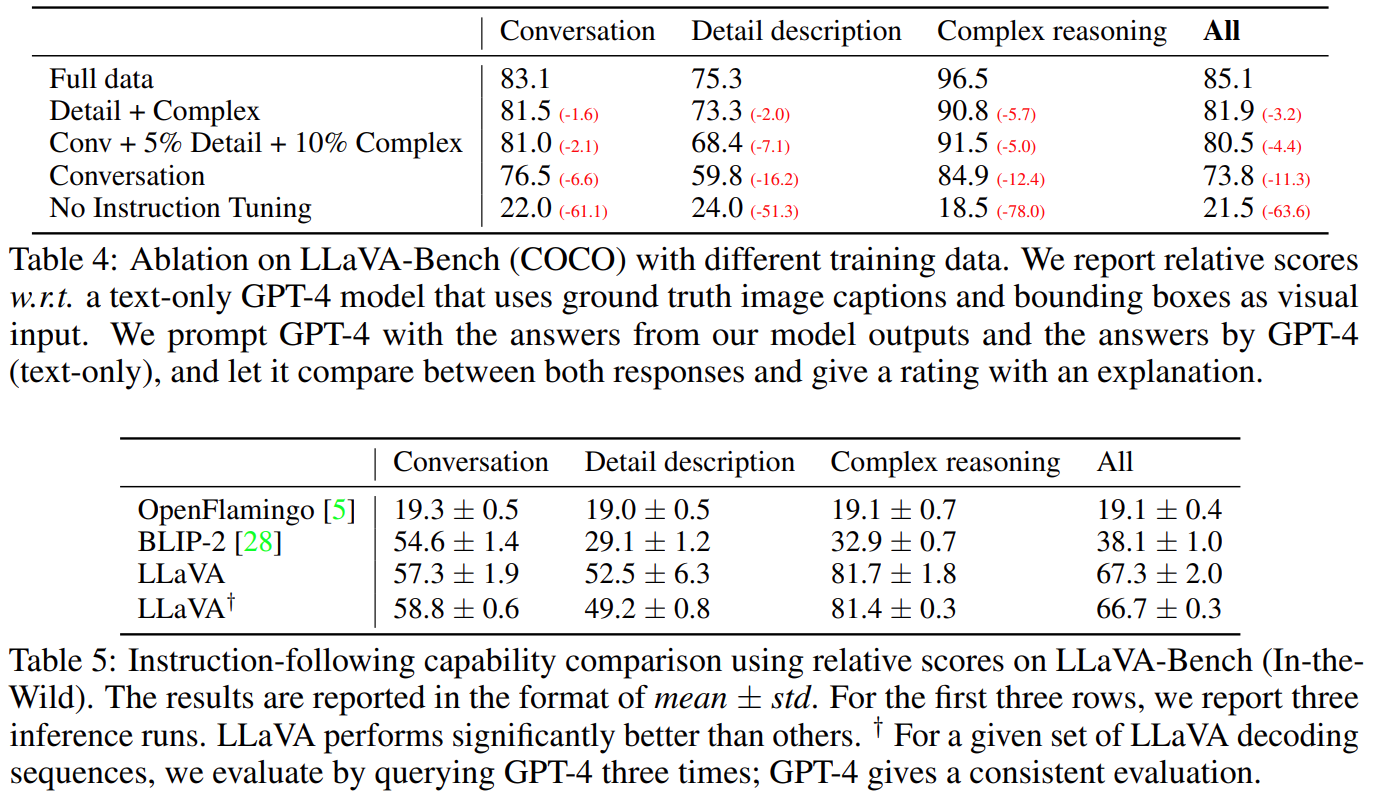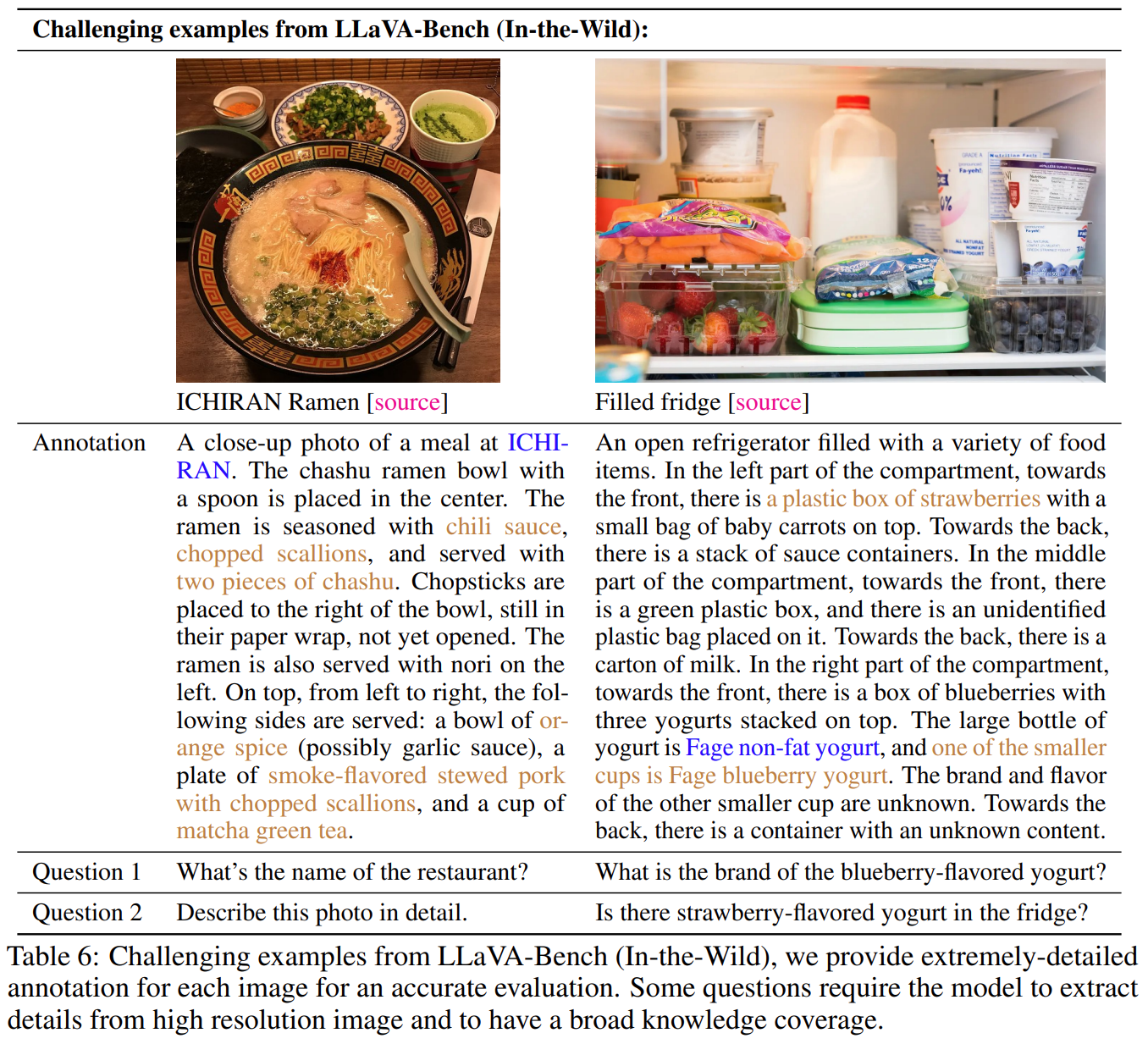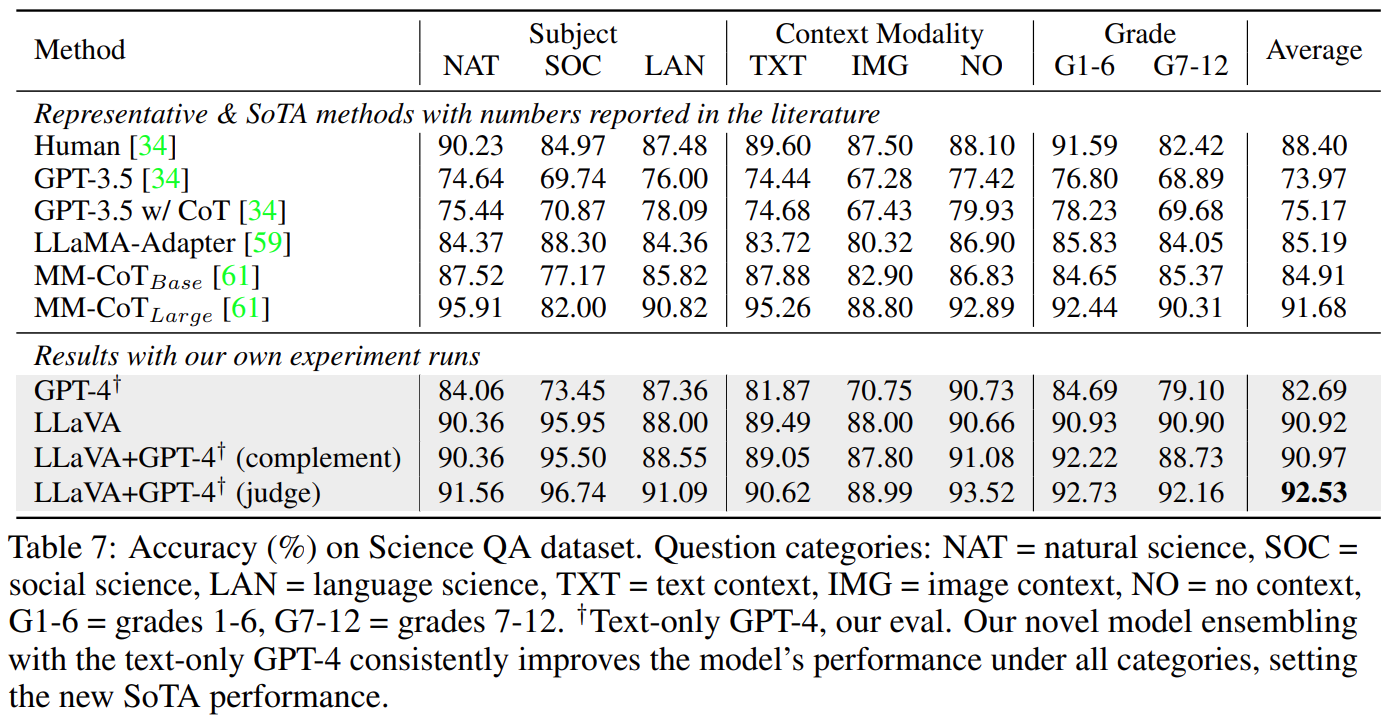Visual Instruction Tuning
LLaVA
指令智能体分为两类:端到端的,通过LangChain[1]/LLM[35]协调各种模型的系统。

数据集生成用GPT辅助生成的,具体不写了。
模型结构:

input image Xv
LLM:Vicuna
visual encoder:pre-trained CLIP visual encoder ViT-L/14
![]()
W是为了和词向量一个维度(we apply a trainable projection matrix W to convert Zv into language embedding tokens Hv, which have the same dimensionality as the word embedding space in the language model)
这个线性映射很简单,也可以设计复杂一些,比如gated cross-attention in Flamingo [2] and Q-former in BLIP-2。
Training:
给一张图片有很多问答对:![]()
![]()
这就使得多模态指令的统一格式。使用LLM的原始自回归训练目标,对LLM预测的tokens执行指令调整。


两阶段训练:
Stage 1: Pre-training for Feature Alignment.
对于图像Xv,随机采样问题Xq,这是要求assistant简要描述图像的语言指令。GT答案Xa是原始标题。
保持视觉编码器和LLM权重冻结,并仅在可训练参数θ=W(投影矩阵)
Stage 2: Fine-tuning End-to-End.
保持视觉编码器权重冻结,并继续更新LLaVA中投影层和LLM的预训练权重
实验:






)


之App名称)

)











